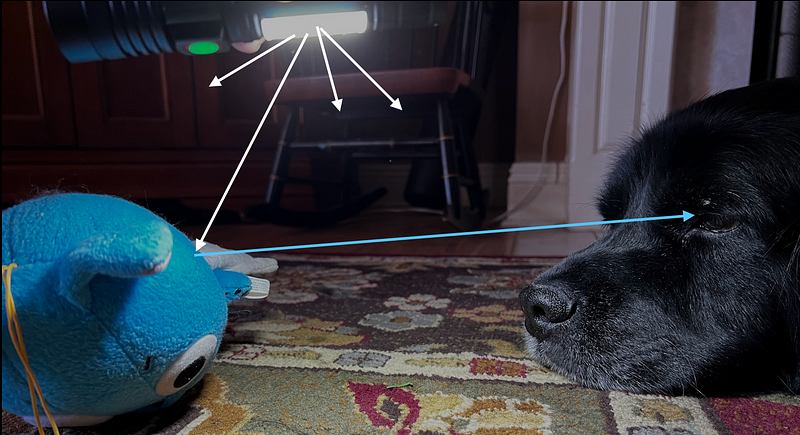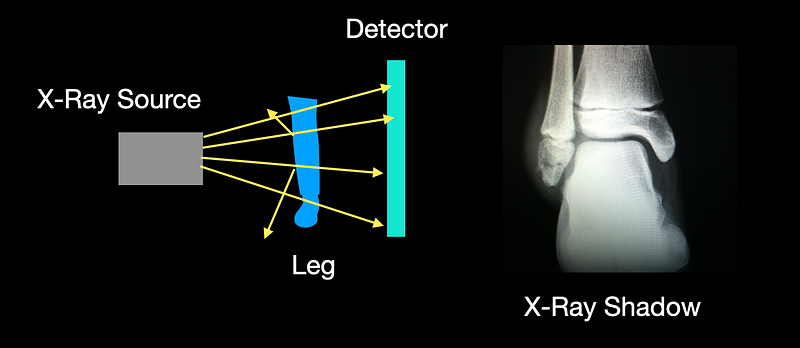Peacemaker's Helmet: X-Ray Vision or Just a Fantasy?
Written on
Chapter 1: Understanding Vision
To clarify things right from the start—I'm not too concerned about whether x-ray vision, like what we see in Peacemaker's fifth episode on HBOMAX, could exist in reality. The charm of superhero shows lies not in their strict adherence to scientific accuracy but rather in the captivating narratives they weave. Now, let’s delve into the intriguing science behind how we perceive the world around us.
How Do We Perceive Our Surroundings?
To grasp the concept of x-ray vision, we first need to understand how human vision works. Humans can only perceive a limited portion of the electromagnetic spectrum, known as “visible light.” X-rays are also part of this spectrum, but they have significantly shorter wavelengths.
At its core, vision involves our eyes acting as light receptors. Our eyes need light to enter them for our brains to interpret visual information. For instance, here's a representation of how my dog perceives a toy:

In this scenario, light from a flashlight reflects off the toy, entering my dog’s eye. Then, a series of brain processes occur, allowing him to visualize the toy. Eventually, he engages with it (don’t worry, he’s well-behaved!).
Now, consider a situation with absolutely no light. Imagine a completely dark room—no glimmers from nightlights or moonbeams. What would you see?

In utter darkness, the absence of light means seeing nothing at all. Our brains interpret this lack of light as the color black. The critical takeaway is that to "see" anything, light must enter the eye, whether it’s reflected from an object or emitted by a light source.
The Role of X-Rays
As mentioned earlier, both visible light and x-rays belong to the electromagnetic wave family. They travel at light speed and possess wavelengths, but they differ significantly in their measurements. Visible light has wavelengths ranging from 400 to 700 nm, while x-rays range from 10 pm to 10 nm (10^-11 m to 10^-8 m).
Due to their shorter wavelengths, x-rays interact with matter differently. For example, when you shine a green laser on your hand, the skin absorbs most of that light. Conversely, x-rays can penetrate your skin more effectively, allowing them to pass through while being partially blocked by bones. This forms an x-ray image—essentially a shadow on the detector.

Now, let’s consider the limitation of Peacemaker’s x-ray helmet. Is it an x-ray emitter or a detector? To visualize through an object, you would need an x-ray source positioned on the opposite side of the object. Hence, it seems unlikely to function as portrayed.
Exploring Possible Solutions
Now, let’s get creative. How could we design a helmet that feasibly incorporates x-ray technology? During my time as a Technical Consultant for the CBS show, MacGyver, I often engaged in such imaginative scenarios.
While traditional x-ray machines may not work, we could still utilize x-rays. Suppose Peacemaker's helmet includes x-ray detectors along with small screens to display images. In this case, he would need a source of x-rays. Imagine this: a small drone equipped with x-ray capabilities that launches from his helmet and emits x-rays as it flies away.
That idea might sound absurd, but what about alien creatures controlling minds? If that’s acceptable, then perhaps the x-ray drone concept is worth considering!
An even more plausible solution could be backscatter x-rays. These were once employed at airports to replace metal detectors. While most modern systems use millimeter-wave detection rather than x-ray backscatter, the principle remains similar. Backscatter x-rays analyze the x-rays that scatter back rather than passing through an object, enabling detection without requiring the source and detector to be on opposite sides.
Here’s a practical example:

While there are variances in the amounts of emitted x-rays and the types of objects visible through backscatter versus traditional x-rays, this method could align well with the show’s narrative. The challenge would involve miniaturizing the x-ray source to fit within the helmet, along with finding a suitable power supply.
Next on my agenda is to investigate Peacemaker’s sonic blast helmet—now that’s going to be an interesting challenge!